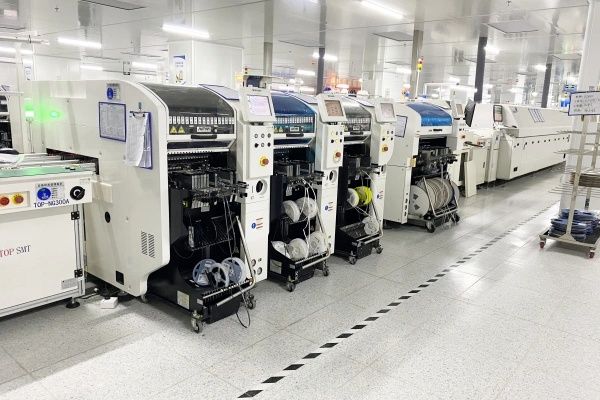Surface Mount Technology (SMT) machines are crucial tools in modern electronics production. They place tiny electronic components like resistors, capacitors, and microchips directly onto printed circuit boards (PCBs). This method replaced older ‘through-hole’ assembly because it allows much more compact, reliable, and high-speed manufacturing.
Manufacturers needed a way to build increasingly complex and miniaturized electronics think smartphones, laptops, and IoT devices efficiently and at scale. SMT machines exist to meet that need, automating the precise placement of components and enabling fast production lines with consistent quality.
Importance – Why This Matters Today
Electronics are everywhere: in our phones, cars, home appliances, medical devices, and more. Efficient production of reliable electronics depends heavily on SMT technology.
SMT machines matter because:
-
Speed and volume: They work much faster than manual placement, enabling mass production at high speeds.
-
Precision: Their accuracy reduces placement errors, improving product reliability.
-
Compactness: Components can be smaller and more densely packed, supporting miniaturization of devices.
-
Reduce costs: Automation lowers labor costs and material waste.
Who is affected?
-
Manufacturers: Gain cost-effective, high-quality production.
-
Consumers: Get more reliable and affordable electronic products.
-
Industry innovators: Benefit from the flexibility to produce complex designs quickly.
Recent Updates – Trends and Developments in the Past Year
Here are some key changes and developments in the world of SMT in the past year:
| Trend | Description | Date/Period |
|---|---|---|
| Smart automation & AI | Growing use of AI-driven vision inspection and placement optimization | 2024–2025 |
| Miniaturized formats | Handling increasingly smaller components like 01005 (0.25 mm × 0.125 mm) | Ongoing through 2024 |
| Sustainability focus | More energy-efficient machines and lead-free soldering to meet environmental goals | 2024 |
| Edge computing integration | Real-time data analytics on production floors to minimize downtime | Late 2024 |
Laws or Policies – Governing SMT Technologies
SMT production is influenced by a range of regulations and standards, especially given the environmental and health implications of electronic manufacturing. In India, where many SMT facilities operate, some relevant policies include:
-
E-Waste (Management) Rules, 2016 (amended later): Requires proper collection, recycling, and disposal of e-waste, affecting how SMT-related electronics are managed at end of life.
-
Restriction of Hazardous Substances (RoHS): Limits use of lead, mercury, cadmium, and similar dangerous substances in electronic products drives wider adoption of lead-free solder processes.
-
Bureau of Indian Standards (BIS): Defines quality and safety benchmarks for electronics and components used in manufacturing.
-
Make in India / Production-Linked Incentive (PLI) schemes: Encourage domestic electronics manufacturing through subsidies and incentives SMT machine users/manufacturers may benefit indirectly.
Globally, similar frameworks apply, such as the European Union’s RoHS directives, waste electrical and electronic equipment (WEEE), and various FDA or ISO standards for medical electronics, when applicable.
Tools and Resources – Helpful in SMT Learning and Practice
Here are some useful tools, websites, calculators, and services for anyone getting started with SMT or working in this field:
Online Resources
-
IPC.org: Industry standards (e.g., IPC-A-610 for electronic assemblies) and guidance.
-
SMTnet.com: Forums, tutorials, news, supplier listings.
-
Soldering/placement video tutorials: Many on YouTube provide step-by-step visuals—great for beginners.
Software & Calculators
-
Gerber viewer tools: Allow inspecting PCB layouts (KiCad, Gerbv, online viewers).
-
Component placement optimization tools: Help arrange parts to improve speed and efficiency—often built into pick-and-place machine software.
-
Solder paste volume calculators: Estimate how much solder paste is needed based on pad size and thickness.
Training & Templates
-
PCB design templates: Provided by KiCad, Altium, or Eagle with footprints sized for SMT components.
-
Pick-and-place machine simulators: Built-in in some vendor software to simulate production runs before actual execution.
Service Providers
-
Local SMT assembly houses: Offer low-volume prototyping if you don’t own machines.
-
Online PCB and assembly services: Companies that accept your design files and deliver assembled boards.
Frequently Asked Questions (FAQs)
Q1: What’s the difference between SMT and through-hole assembly?
A: SMT places components directly onto the surface of PCBs, while through-hole involves inserting component leads into drilled holes. SMT is faster, supports smaller components, and is more automated; through-hole is stronger mechanically but slower and often manual.
Q2: Do I need special training to operate an SMT machine?
A: Yes basic training is essential. Operators learn about machine setup, nozzles, component feeders, inspection, and safety. Certifications like IPC training courses help ensure quality and consistency.
Q3: Are SMT machines expensive?
A: They range from basic benchtop pick-and-place units (a few thousand dollars) to high-end, fully automated lines (hundreds of thousands). Many small businesses prototype with manual or semi-automatic tools, or outsource to assembly services.
Q4: How small can SMT components get?
A: Very small commonly used sizes include 0201 (0.6 mm × 0.3 mm) and even 01005 (0.25 mm × 0.125 mm). As component miniaturization continues, placement accuracy and equipment precision become even more critical.
Q5: Can SMT machines handle both passive and active components?
A: Yes. SMT machines place both passive parts (resistors, capacitors, inductors) and active parts (ICs, diodes, transistors). For fine-pitch or delicate ICs, special vision systems and placement heads may be needed.
Closing Thoughts
SMT machines are the backbone of modern electronics manufacturing, enabling the tiny, powerful devices we rely on daily. They combine speed, accuracy, and adaptability making electronics affordable, advanced, and ubiquitous.
Understanding SMT systems, staying up to date with trends (like AI-enhanced automation), and knowing the rules that govern them equips anyone from hobbyists to professionals with the foundation to innovate responsibly.
If you’d like a deeper dive into any part say, machine types, pros vs cons, or step-by-step setup just let me know!
